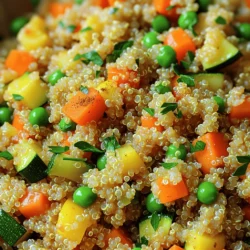
- Quinoa Vegetable Pilaf
Discover the delightful recipe for Quinoa Vegetable Pilaf that will elevate your mealtime! Packed with vibrant veggies and aromatic spices, this pilaf is not only delicious but also healthy. Perfect for a quick weeknight dinner or a cozy gathering, it comes together in just 30 minutes. Dive into this flavorful dish and impress your family and friends.